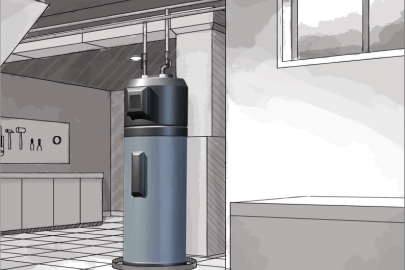Important Maintenance Tips for Your Home's Hot Water SystemKey Maintenance Techniques for Your Home's Hot Water System
Important Maintenance Tips for Your Home's Hot Water SystemKey Maintenance Techniques for Your Home's Hot Water System
Blog Article
What are your ideas on Tips For Maintaining Your Hot Water Heater?

Warm water is important for day-to-day convenience, whether it's for a refreshing shower or cleaning meals. To ensure your warm water system runs efficiently and lasts much longer, regular upkeep is essential. This article supplies functional suggestions and understandings on how to keep your home's hot water system to stay clear of interruptions and pricey fixings.
Introduction
Keeping your home's warm water system might appear challenging, however with a couple of simple steps, you can ensure it runs smoothly for many years ahead. This guide covers every little thing from recognizing your hot water system to do it yourself upkeep suggestions and recognizing when to hire expert aid.
Significance of Preserving Your Hot Water System
Routine upkeep not only prolongs the life-span of your hot water system however additionally guarantees it runs efficiently. Overlooking upkeep can lead to reduced performance, greater power costs, and even premature failing of the system.
Indicators Your Hot Water System Requirements Upkeep
Recognizing when your hot water system needs interest can avoid significant concerns. Look out for signs such as irregular water temperature, unusual sounds from the heating system, or rusty water.
Understanding Your Hot Water System
Prior to diving right into upkeep tasks, it's useful to comprehend the fundamental components of your hot water system. Normally, this consists of the hot water heater itself, pipelines, anode poles, and temperature level controls.
Month-to-month Upkeep Tasks
Normal month-to-month checks can help catch small concerns prior to they escalate.
Flushing the Water Heater
Flushing your hot water heater gets rid of debris accumulation, enhancing effectiveness and extending its life.
Monitoring and Changing Anode Rods
Anode poles stop deterioration inside the container. Evaluating and changing them when worn is vital.
Checking and Readjusting Temperature Level Setups
Readjusting the temperature level setups makes certain optimum efficiency and safety and security.
Do It Yourself Tips for Upkeep
You can do a number of maintenance tasks on your own to maintain your warm water system in leading condition.
Looking for Leakages
On a regular basis check pipes and connections for leaks, as these can lead to water damages and greater expenses.
Checking Pressure Relief Valves
Testing the stress relief valve ensures it operates appropriately and stops extreme stress build-up.
Protecting Pipes
Insulating warm water pipelines minimizes heat loss and can save power.
When to Call a Specialist
While DIY maintenance is beneficial, some concerns need expert proficiency.
Complex Concerns Needing Professional Help
Instances include major leakages, electrical problems, or if your hot water heater is constantly underperforming.
Routine Specialist Upkeep Advantages
Specialist upkeep can consist of extensive inspections, tune-ups, and guaranteeing compliance with safety and security requirements.
Verdict
Routine maintenance of your home's warm water system is vital for performance, durability, and cost financial savings. By following these pointers and understanding when to seek expert help, you can make certain a reputable supply of warm water without unforeseen disruptions.
How to Maintain an Instant Hot Water Heater
Before tinkering with your hot water heater, make sure that it’s not powered on. You also have to turn off the main circuit breaker and shut off the main gas line to prevent accidents. Also turn off the water valves connected to your unit to prevent water from flowing into and out of the appliance. 2. When you’re done, you have to detach the purge valves’ caps. These look like the letter “T” and are situated on either side of the water valves. Doing so will release any pressure that has accumulated inside the valves while at the same time avoid hot water from shooting out and burning your skin. 3. When the purge valves’ caps are removed, you have to connect your hosing lines to the valves. Your unit should have come with three hoses but if it didn’t, you can purchase these things from any hardware or home repair shops. You can also get them from retail stores that sell water heating systems. Read the user’s manual and follow it to complete this task properly. When the hosing lines are connected, open the purge port’s valves. 4. You should never use harsh chemical cleaners or solutions when cleaning your unit. Make use of white vinegar instead. It should be undiluted and you’ll probably use about 2 gallons. 5. Now flush your water heater. This task should probably take about 40 minutes. We can’t give you specific directions for this because the procedure is carried out depending on the type, model and brand of your heater. With that being said, refer to the user’s manual. 6. When you’re done draining the unit, you have to turn off the purge port valves again. Remove the hosing lines that you earlier installed on each of the water valves. Put the valve caps (purge port) back in their respective places and be very careful so as not to damage the rubber discs that are found inside these caps. 7. Now that everything’s back in place, check your user’s manual again to find out how to reactivate your water heating system. 8. Once it is working, turn one of your hot water faucets on just to let air pass through the heater’s water supply pipes. Leave the tap on until water flows smoothly out of it. https://www.orrplumbing.com/blog/2014/september/how-to-maintain-an-instant-hot-water-heater/

We had been shown that article about Tips on Maintaining a Water Heater through someone on our other site. Appreciated our content? Please share it. Let someone else check it out. Thank you for being here. Please stop by our website back soon.
Click Report this page